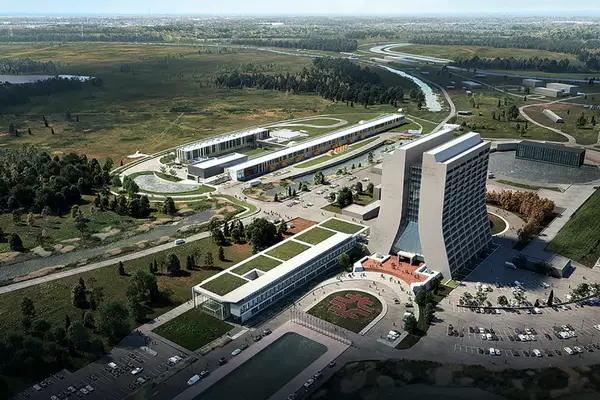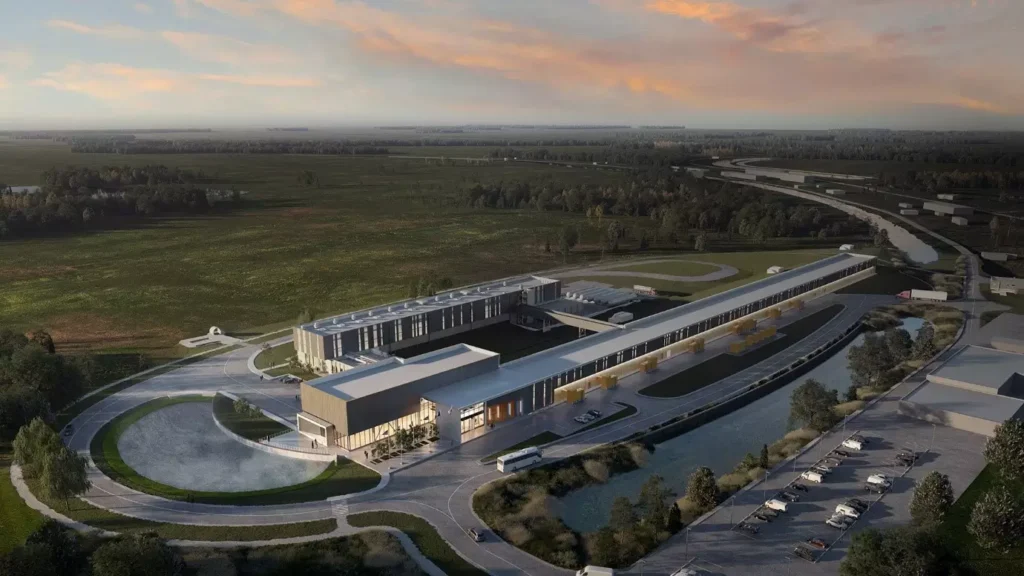India’s Department of Atomic Energy (DAE) is constructing the PIP-II Particle Accelerator Project (Proton Improvement Plan II), a 215-meter-long particle accelerator in the United States.
About PIP-II Particle Accelerator Project:
- PIP-II is constructing a superconducting linear accelerator at Fermilab in Batavia, Illinois, to generate the world’s most intense beam of neutrinos.
- It will have novel technologies and flexibility to conduct various types of experiment, such as the ability to send high-energy, high-speed proton beams as both streams and pulses.
- It will also enable multiple experiments to be conducted simultaneously.
- The accelerator aims to facilitate muon research, explore exotic particles, and contribute to high-precision measurements.
- The accelerator will power the Deep Underground Neutrino Experiment (DUNE) in Lead, South Dakota, aiming to unravel secrets of the universe by studying neutrino properties.
- The PIP-II, Fermilab, and DUNE will all be hosted by the Long-Baseline Neutrino Facility or LBNF.
- The LBNF/DUNE is an independent entity within Fermilab.
- It is a global collaboration, with significant contributions from France, India, Italy, Poland, and the United Kingdom.
- Indian institutions, including the Bhabha Atomic Research Centre, the Inter-University Accelerator Centre, and others, will provide technical components for PIP-II.
What are particle accelerators?
- Particle accelerators are machines that speed up charged particles and channel them into a beam.
- They can accelerate elementary particles, such as electrons or protons, to very high energies.
- Particle accelerators have many applications in medicine, industry, and research.
- When used in research, the beam hits the target and scientists gather information about atoms, molecules, and the laws of physics.
- Particle accelerators speed up the particles that make up all matter in the universe and collide them together or into a target.
- This allows scientists to study those particles and the forces that shape them.
Uses for particle accelerators:
- Medicine: Particle accelerators are used to create medical isotopes for research and treatment, such as those used in PET imaging.
- They are also used to create radioactive drugs that help detect cancer.
- Particle accelerators are also used in X-ray and electronic beam therapy to treat cancer.
- Industry: Particle accelerators are used to manufacture semiconductors, which are a component of computer chips.
- They are also used to sterilize medical equipment and food products.
- Particle accelerators are also used to modify plastics and rubber products, and to treat toxic industrial wastes.
- Research: Particle accelerators are used to produce short-lived medical isotopes, synchrotron light sources, free-electron lasers, and beam lithography for microcircuits.
Some Large Particle Accelerators around the world:
- Large Hadron Collider (LHC): The world’s largest and most powerful particle accelerator, located at CERN in Switzerland.
- The LHC is a 27-kilometer ring of superconducting magnets with accelerating structures that increase the energy of particles.
- SLAC National Accelerator Laboratory: Home to the world’s longest linear particle accelerator.
- The European Synchrotron Radiation Facility (ESRF): Situated in Grenoble, France, it houses the most intense hard X-ray source globally.
Ref: Source
| UPSC IAS Preparation Resources | |
| Current Affairs Analysis | Topperspedia |
| GS Shots | Simply Explained |
| Daily Flash Cards | Daily Quiz |



